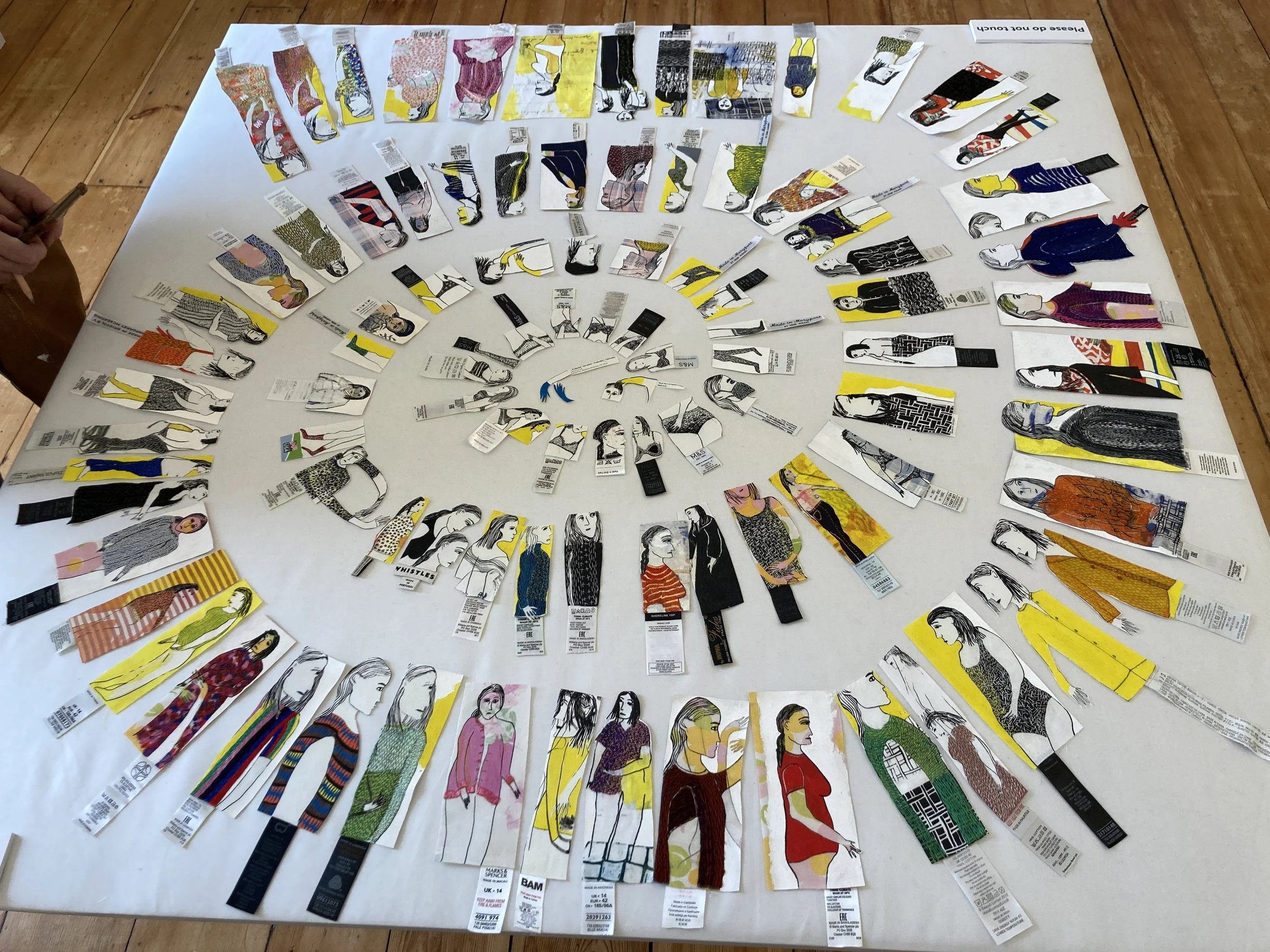A Global Industry
Last month I wrote about a Kiss of Death, by Flox Den Hartog Jager, which formed part of the Connected Cloth exhibition by the 62 Group at the British Textile Biennial. This exhibition focused on the global context of textiles.
In this post I reflect on the work of two other artists in the exhibition, Jae Maries and Jane McKeating. Both these artists focused on the clothes we wear, and the international nature of the fashion industry. They presented their work in ways that would make it easy for any viewer to related the ideas to their own lives.
Jane McKeating’s work One Monday morning, she found 25 countries in her wardrobe arose from a realisation that many of the clothes in her wardrobe were made in countries across the globe. The labels from these clothes form part of the resulting artwork, each attached to a drawing of the person she is when she wears the clothes.
Jane McKeating, 2021. One Monday morning, she found 25 countries in her wardrobe (INSET detail)
Jane McKeating is not a purchaser of Fast Fashion, she says “She isn’t a clothes buyer; familiar, timeworn, outmoded and charity shop purchases form the most part.” (2021).
It is the Fast Fashion industry that particularly concerns Jae Maries, and her work is intended to make people stop and think about the implications of that.
Jae Maries, 2021. Hang on a minute!
The family are wearing clothes that are ‘in fashion’ and not expected to last, as they walk on images of the textile waste mountains in Bangladesh, in the foreground the patchwork is made from recycled materials and quotations related to the ethical issues around fast fashion – climate change, labour conditions and exploitation of natural resources.
The fashion industry is become more aware of these issues, which are not are not easily solved, however at a recent conference the industry was warned that it must address the issues of waste and overproduction to demonstrate its commitment to zero emissions (Dacre, 2021).
It is a thorny issue, because if we all stopped buying clothes all together the people who make them would not be able to earn a living. We must all question where the clothes we buy come from , are they produced in a sustainable way, including the working conditions of those who made them. I hope that these works of art will raise these questions in the minds of those who have viewed the Connected Cloth exhibition over the last two months.
Dacre, K. (2021) Fashion must stick to climate pledges to prevent waste crisis, says UK economist, The Guardian. Available at: https://www.theguardian.com/fashion/2021/dec/03/fashion-climate-pledges-waste-crisis-vivian-hunt-tommy-hilfiger-kris-jenner (Accessed: 4 December 2021).
Maries, J. (2021) Hang on a Minute! Wire coat hangers, recycled fabrics, acrylic paint, machine threads. Patching, piecing, appliqué, painting, hand and machine stitching. 268 x 195 x 21cm , Connected Cloth Whitaker Gallery , 1st October - 30th November 2021
McKeating, J. (2021) One Monday morning, she found 25 countries in her wardrobe. Screen printed and handstitched on cotton bedsheets. Laid onto bedsheet stretched on a board. 120 x 120cm / Board depth 1.5cm, Connected Cloth Whitaker Gallery , 1st October - 30th November 2021














